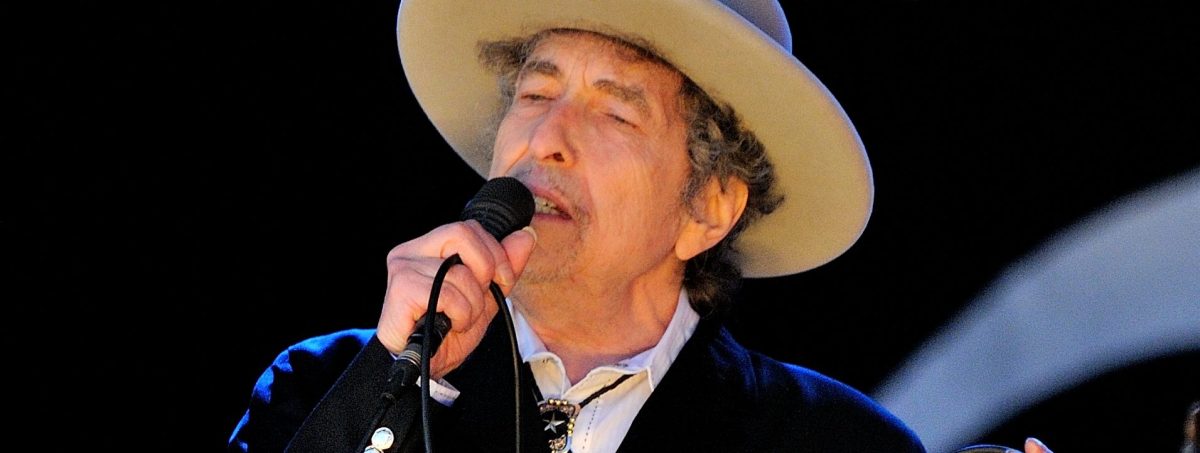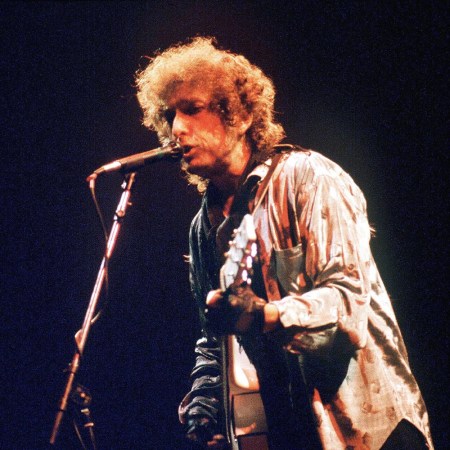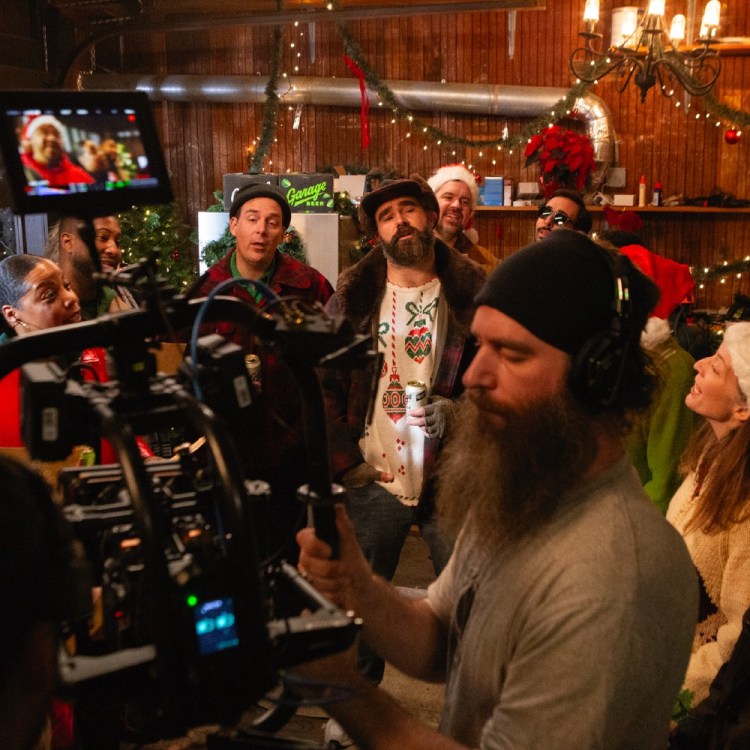We are all living in the heat of a dream.
That dream is rock’n’roll, which we first encountered in the pages of the magazine or as a rumor seeping out of an older sibling’s closed bedroom door. The heat we found in the moment: The strange, hot spirits that danced in the sweet smoke of a hockey arena, in the fuzz and text emanating from under the blue lights of some old vaudeville theatre with sticky floors and greasy fly-paper colored old chandeliers in a crumbling part of town.
Some of us even found the dream in a paneled, shagged basement, in front of a cheap amplifier, behind a battered drum kit, in the chords of a Kinks song — the only tune we all knew how to play. This is where memories were made, when we fell in love with a tangle of worlds and a beat that could be traced to the rhythm of the railway or the holler of some old brakeman on a clear channel radio station.
This is heat is still within us; it is slow-fading smoke that conjures genies in black jeans and red-haired fairies and Cuban-heeled demons whose eyes are clear but whose edges dissolve. Because memory is smoke that somehow remains. It defies the instantly frozen time of a cellphone photo or social media post.
The fire that made the smoke is the real thing. It is the Clash and it is the Fall, and it is Joe Ely, and even Jello Biafra or Cowboy Mouth, all the artists and snarling acrobats who leapt for the sky and landed in Sun Studios.
And it is what I felt when I saw Bob Dylan and his band perform on November 18, at Symphony Hall in Springfield, Massachusetts.
Bob Dylan in 2018 demands that you be in the moment. If you go with him, you will experience 120 minutes as intense and rewarding as any Dylan-trip you ever went on as a teenager — when you first discovered the magic of his eternal poetry and his American exceptionalism.
He will defy your instinct to consign him to memory and he will create new memories. He will put you at the edge of your seat, stick feathers and pins into the edges of your heart.
What if a great artist painted a masterpiece every night, one that could not be found in any museum, any book store, or on the Internet?
Bob Dylan is painting masterpieces every night. Ones that exist for two hours or so, and then vanish, only evidenced by the sparkling warmth and buzz in the memories of those who were in the hall (and a steady stream of roaring, echoing, hushed and harsh audience tapes, which, in some strange and beautiful way, reflect the character of the shows themselves).
Just as we have studied, intently and sometimes ludicrously, his past work, we must recognize that Dylan’s current live performances, these rolling, rollicking, elegiac, swooning, swinging, snarling evenings, are as important as any album. They are a stage of development unto themselves.
They represent the artist saying to his audience: “Just as I gave you Blonde on Blonde and Blood on the Tracks and Desire and New Morning and on and on, now I give you this; and I ask you to share with me this moment in time, which is as important, intense, and intensive as any album I gave you.”
I strongly believe that Dylan ‘18 is creating a body of work, an entire stage of his development that only exists on the concert stage, for the concert stage.
It is brilliant, graceful, complete, engaging, and demands that we use memory as others use their cellphone camera or stereo. Bob Dylan’s medium is memory — his and ours — and his current work is an affirmation of his own voyage, what he has witnessed, what he has dreamed, what he has aspired to, what he admires.
The intentionality of the performance, of the whole Never Ending Tour, is also revealed in the strict prohibition against photography or cell phone videos/pictures during the performance. (This is enforced with spotters are stationed throughout the hall).
That prohibition allows for an absolutely singular magic. It insists on the energy of our presence and the archaic engine of attention. And we are rewarded with the glow of in-the-moment joy. Unlike so very many shows, it exists for us, and for the artist, and not as a platform for boasting photos to be posted in social media.
Dylan’s performance becomes both moment and memory. We experience something exquisite when we abandon the expectation of a future fake “moment” artificially frozen by technology. See, a picture is not a memory. It is a simulacrum of memory.
Every night Dylan actively battles the Paul Shaffer-izing of the Music of Our Lives; he refuses to dishonor his genius by Xeroxing it. Instead, he lifts these famous texts out of their frames and re-examines them every night, re-lives them every night, gives them new life every night. Dylan isn’t just playing the music of our life; in these unfamiliar, startling arrangements of this familiar material, he is also playing the music of his life.
Bob Dylan and His Band are one-third greaser rock, one-third Frenchman Street New Orleans rumble and roll, and one-third greasy, loose-elbow Texas swing. Nightly, he is re-staging his treasured memories, re-visiting his favorite places: The southwestern Roadhouse, the blue, loud streets of New Orleans, and the VA Halls and roller rinks he played when he was a teenager, when he stood behind cheap cigarette-burned upright pianos and pounded out dry and wet hump prom rock for flattops and acne-scarred moon-faced greasers under the low, vodka-blue skies of Minnesota’s flatlands.
In fact, it is literally impossible to watch and hear Dylan ’18 — in which he spends most of the set standing, legs apart and slightly bent, behind a piano, playing a rollicking New Orleans/Memphis style of boogie-woogie piano — and not imagine teenage Dylan, before he became a Guthrie acolyte, playing rock’n’roll in a teen dance band.
I think this is the most evident clue to understanding Dylan ’18: He has returned to his true roots, before he invented himself. Yet he somehow accesses his own future, gathering all the music he was to write, all the music he was to discover, all the avenues and lanes and cities and hills he would eventually live in and learn from.
There is this, too: Dylan and his band (Dylan on piano, Charlie Sexton on guitar, Tony Garnier on bass, George Receli on drums, and Donnie Herron on pedal steel, lap steel, electric mandolin, banjo, and violin) are one of the greatest rock’n’roll bands I have ever seen.
Period.
In terms of finding the marrow of rock’n’roll and somehow cracking the bone and exposing it to stage lights, in my personal experience only the Fall, Motörhead, or very early Sonic Youth, have left me so alive in the moment, yet also aware of the genre’s smoky past. That is not to say that Dylan ‘18 leaves no room for varying textures. Notably, “Like A Rolling Stone” is performed with a plaintive, almost Lanois-esque touch, which is utterly right: To perform “Like A Rolling Stone” with the arrogant, judgmental snarl of youth would be a lie. It makes much, much more sense recast it as a more sympathetic, forgiving memory.
Sexton, fleet and inventive, changes styles and cultures literally from bar to bar, tossing off insane, hyper-jazz changes, post-punk/pre-Beatles melodic leads, and ripping blues and raunch-hand lines, all without ever making a grimace or stopping for applause.
If you want to see someone make a lot of faces and let you know how versatile they are, go see an expert hack like G. E. Smith or Waddy Wachtel. But if you just want to see one of the best electric guitarists in the land inhale everything sweet, spicy, and elegant about American music and exhale it effortlessly, see Charlie Sexton.
Amazingly, Sexton is only the third most spectacular player in the group, and that’s because Dylan has one of the greatest rhythm sections in the history of rock.
I have almost no hesitation in saying that George Receli is the best drummer I have seen in at least a decade. He is a robust, adept, and joyfully New Orleans-style player, using the kit as an expressive gateway to centuries of rhythm. He relies almost exclusively on the skins, not the cymbals, simultaneously playing light and atomic. He is always rumbling and rolling, moving steadily like a freight train, hovering mysteriously like a pelican, and working his way around the songs like a late-night detective who listens to a lot of WWOZ and surf music. It’s almost like watching Keith Moon if he had been trained on Rampart Street.
Bassist Tony Garnier keeps an eye and an ear on every member of the band, and he feels like the bandleader. He plays over, under, on top of and around Receli, Sexton, Herron, and Dylan, but he especially takes out a thick, greasy laundry marker and underlines Sextons quick melodic pops, while at the same time bold-typing every one of Receli’s tom hits.
You may buy the ticket because it has Dylan’s name on it; you will leave having seen one of the greatest bands you will ever see live.
As for Dylan himself, for the most part he stands behind the piano, attentive and happy, with the wide-legged stance of the roadhouse bandleader. On a few occasions, he emerges to approve of his band or relish the surroundings. On these forays — he is like a boss making a tour of his place of work — he walks with the slow but steady stiff-legged gait of the aging Charles Foster Kane, proud and powerful. On one (and only one) occasion, he leaves the piano to stand behind a microphone to sing; while doing so, not only does he sway like a proud old rocker, he also holds the mic stand aloft and twirls it — a deliberate, odd, almost flowery gesture that would seem to be unique to this tour.
The last time I saw Dylan, about fifteen months ago, he stepped out from behind the piano to sing about half a dozen songs, and when he did, he cut a completely different physical form. Then, he took a wide-legged stance, somewhere between a classic 1930’s crooner and a long-distance runner awaiting the starter’s pistol, and he cradled the mic like a baby he was cooing to sleep. But this time, he rocks with the mic, fondles and spins the mic stand, and sways like an old dancer remembering the serpentine moves of his prom night. It’s a curious example of how he is continually rewriting his performances.
His face has changed, too, in the last year. His chin, an essential part of that famous profile, has collapsed into his neck; and the sly almond eyes and slash of a half-smile we know from all those pictures seem to be folding into the aging face. However, the hair remains a defiant puff of history, a burning bush that he carries with him as if to say, I remain who you know from the posters.
Most significantly, it is clear he is virtually completely in control of his voice, and any “deterioration” or grunt or growl that some may note is, I believe, deliberate affectation. Generally, I think Dylan ’18 sounds like a cross between the gasping, gravelly Dylan you hear on his very earliest demos (listen to the very first recordings of “Talkin’ New York”), and the crooning, high-lonesome Dylan that was revealed between 1967 and 1972. Any doubt that he knows exactly what he is doing is set aside when he effortlessly jumps an octave, or slips into a sweet, high range, conjuring the spirit of Jimmie Rodgers, Slim Whitman, Pete Seeger, or Hank Williams. His radically transformed arrangements are not contrarian, but deeply honest.
He understands, as the Buddha said, that you cannot put your hand in the same river twice: Each time you touch the skin of the water, it has moved on, it is a new river. It feels as if he is inside his material, not just imitating it.
Which is to say, again: Dylan knows exactly what he is doing.
The Never Ending Tour may be one of Dylan’s most important and most honest works. It links the threads — thorny, wooly, silky, sunset pink, winter-night violet, and Route 66 sun bleached-white —that have been accumulating since Dylan first made music or even imagined music. It is all there on stage, in the worn and hot fingers of Sexton, Receli, Garnier, and Herron, in the ancient, wise and vulnerable voice of Dylan, in the parade rumble of the beat.
This article appeared in an InsideHook newsletter. Sign up for free to get more on travel, wellness, style, drinking, and culture.





















